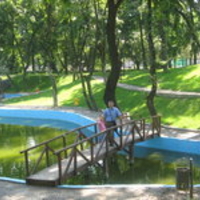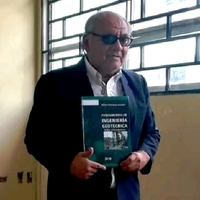Papers by Biljana Kovačević Zelić
CRC Press eBooks, Sep 10, 2023

Engineered barrier systems (EBS) used in radioactive waste disposal facilities are part of the sy... more Engineered barrier systems (EBS) used in radioactive waste disposal facilities are part of the system which must prevent radionuclide from reaching the biosphere, for up to 1 000 000 years, migrating from deep (more than 300 m), stable geological environment. EBS is the second ‘line of defense’ against the migration of radionuclides, after the corrosion of containers. They also shield containers from possible environmental impact and the host rock from the heat released by the high level radioactive waste (HLW) and/or spent nuclear fuel (SF). Engineered barrier systems are usually made of cement, salt, clay (bentonite) or clay/rock mixtures. Quality control tests of clays are the same for all engineered barrier systems either used in the environmental engineering or standard geotechnical constructions. Differences may show up in the special required criteria related to specific application. Recommended clay properties depend also on the type of host rocks. Standard quality control procedures for bentonite used as a sealing barrier in radioactive waste disposal sites are described as some personal experiences. The research to determine correlation between mechanical properties of the bentonite and its swelling behavior was conducted on the granular bentonite. X-ray powder diffraction showed that the bentonitne contains 80-85% of montmorillonite. Bentonite properties were as follows: liquid limit 437%, plastic limit 53%, specific surface area 700 m2/g and CEC 89 meq/100g. The influence of swelling on the bentonitne shear strength was studied in the direct shear device. During this process, hydration times (7 to 21 days) were changed in a series of tests at different normal stresses (50 to 200 kPa) simulating bentonite clay swelling. The impact of swelling on the bentonitne consolidation and hydraulic properties were studied in oedometer device and triaxial device under isotropic compression conditions. Demineralized water was used as the test fluid. Primary swelling phase was reached after 31 days regardless of the intensity of the normal stress. Shear tests show a significant reduction in cohesion with the extension of the hydration of bentonite, and the friction angle increases with hydration. There is no significant change in the value of the friction angle by extending hydration after 14 days.

Numerous commercially manufactured products of bentonitic blankets are available on the worldwide... more Numerous commercially manufactured products of bentonitic blankets are available on the worldwide market. They are used in the environmental, transportation and geotechnical engineering. In the environmental applications bentonitic blankets act as a low-hydraulic barrier component on waste disposal sites. From the engineering design point of view, stability analyses of the hydraulic barriers at waste disposal sites are one of the most important issues. Therefore, proper determination of the shear strength parameters of all the barrier components has a huge importance for design engineers. Shear strength parameters of bentonitic blankets are generally obtained from laboratory direct shear tests, but the fund of the published data is limited. Moreover, there is a significant variability of the test procedures used and the results obtained. Therefore, the study of the internal shear strength of one type of bentonitic blankets known under commercial name Claymax 200R was performed. Labo...
U radu su prikazana iskustva u kreiranju i implementaciji Bolonjskih programa na studijima rudars... more U radu su prikazana iskustva u kreiranju i implementaciji Bolonjskih programa na studijima rudarstva, naftnog rudarstva i geologije, kao i akreditaciji laboratorija i visokoskolskih institucija u RH.

The Unified Soil Classification System (USCS) is the basis for numerous methods for soil traffica... more The Unified Soil Classification System (USCS) is the basis for numerous methods for soil trafficability research. Since USCS data are not always available, various other data and methods are used to correlate and predict the USCS soil group. This paper describes two methods used for the purpose of mapping Continental Croatia (CCro) according to USCS to a depth of 50 cm. In the first method, the possibility of transfer of 308 profile samples according to the International Soil Science Society (ISSS) classification system into USCS was examined. The results show that it is impossible to directly transform ISSS data into USCS. In the second method 414 USCS profiles were used to analyse the weights of factors in the spatial analysis with inverse distance weighting (IDW). The analysis included layers of dominant and associated soil units of the Basic Soil Map of Croatia (BSM), Geological Map of Croatia (GM), drainage and catchment areas. The obtained weights were as follows: BSM 47,12%, ...
Geotechnical engineering, 2002
The paper deals with the results of the slope stability analysis of the landfill "Jakusevec&... more The paper deals with the results of the slope stability analysis of the landfill "Jakusevec", the main waste dump of Zagreb, the capital of the Republic of Croatia. The dump has been used since 1960s for disposal of various kinds of waste. As the leachate from the dump may have a negative impact on the city drinkable water supply and distribution system, a reconstruction of the dump into a sanitary landfill started a few years ago. Two methods were used for calculation of the slope stability: the SLOPE/W computer program was applied for calculation using the Bishop's simplified method of limit equilibrium analysis ; also, numerical modelling was made by using the finite difference code FLAC. The results of the two types of analysis were compared from the point of view of the calculated safety.

2nd Croatian Conference on Earthquake Engineering ‒ 2CroCEE
This paper shows an overview of extensive geotechnical and geological investigation of soils arou... more This paper shows an overview of extensive geotechnical and geological investigation of soils around cover-collapse sinkholes that appeared in a constrained area around Mečenčani and Borojevići villages following the 2020–2021 Petrinja earthquake sequence. A total of 122 new and 49 pre-existing historical sinkholes were recorded, mapped, and classified during the geological and geotechnical reconnaissance fieldwork. Many sinkholes collapsed within an area of only 1.13 km2, a relatively rare phenomenon associated with earthquakes, thus motivating soil investigations to better understand associated failure mechanisms and underlying conditions. This paper shows an overview of triaxial test data in synergy with soil water retention curves of unsaturated soils detected in the area, along with results of standard physical soil tests. The soil in the area consists of a 4–15 m thick clayey cover with sporadic gravel lenses. Clays are mostly over-consolidated, with varying degrees of saturati...
Zbornik radova. VIII. međunarodni simpozij. Gospodarenje otpadom Zagreb 2004., 2004











Uploads
Papers by Biljana Kovačević Zelić